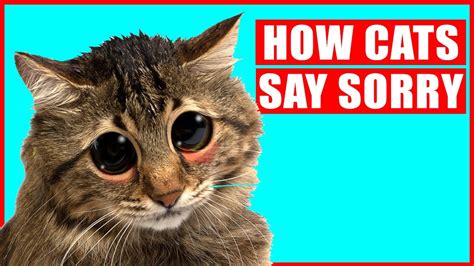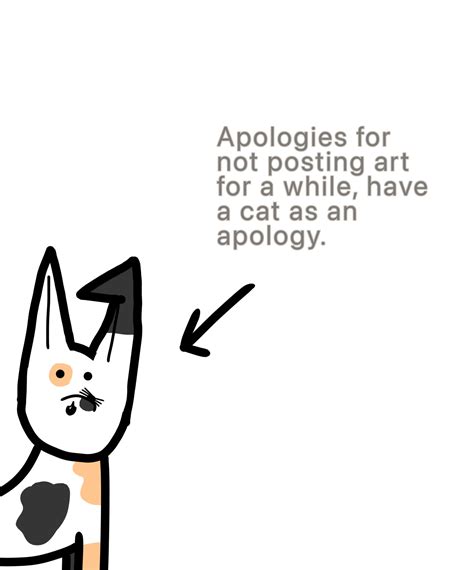
A Colorado family received an unexpected visitor when a bobcat wandered into their home, spending several hours lounging and exploring before being safely removed by wildlife officials.
A Boulder County family experienced a wild encounter recently when a bobcat entered their residence and made itself comfortable. The incident, which unfolded over several hours, ended peacefully with the animal’s safe removal by Colorado Parks and Wildlife (CPW) officials.
The saga began when the bobcat, for reasons still unclear, gained entry into the home. According to CPW spokesperson Kara Van Hoose, “The homeowners were obviously surprised.” The family, upon discovering the wild cat, wisely chose to keep a safe distance and promptly contacted the authorities. “They did the right thing by calling us,” Van Hoose stated.
Upon arrival, CPW officers assessed the situation and determined that the bobcat appeared to be in good health and was not exhibiting any signs of aggression. The primary concern was to safely remove the animal without causing it undue stress or harm.
The bobcat, seemingly unfazed by its new surroundings, spent its time exploring the house, relaxing in various spots, and generally making itself at home. “It was just hanging out, napping in different places,” Van Hoose explained. This behavior, while unusual, is not entirely unheard of with wildlife encounters in areas where human development encroaches on natural habitats.
After several hours, CPW officers were able to safely coax the bobcat out of the house and release it back into its natural environment. The entire operation was conducted with the safety of both the animal and the homeowners as the top priority.
This incident serves as a reminder of the importance of coexisting with wildlife and knowing how to respond in such situations. CPW advises residents to keep a safe distance from wild animals, avoid feeding them, and contact authorities if an animal appears to be sick, injured, or posing a threat.
Understanding Bobcat Behavior and Ecology
Bobcats ( Lynx rufus ) are a common sight in Colorado, inhabiting a wide range of habitats from forests and mountains to deserts and even suburban areas. They are highly adaptable creatures, capable of surviving in close proximity to human populations.
These medium-sized wild cats are typically solitary and nocturnal, meaning they are most active at night. They are skilled hunters, preying on a variety of animals including rabbits, rodents, birds, and occasionally small deer. Bobcats play an important role in maintaining the balance of ecosystems by controlling populations of prey species.
While bobcats are generally shy and avoid human contact, encounters can occur, especially in areas where their habitat overlaps with residential areas. Factors such as food availability, habitat loss, and the presence of unsecured attractants (e.g., pet food, garbage) can increase the likelihood of bobcats venturing into populated areas.
Why Did the Bobcat Enter the House?
The reasons why a bobcat might enter a home are varied and not always easily determined. Some potential explanations include:
- Searching for Food: The bobcat may have been attracted by the scent of food inside the house, whether it was pet food, improperly stored garbage, or even rodents that had taken up residence within the walls.
- Seeking Shelter: In extreme weather conditions, such as heavy snow or cold temperatures, a bobcat might seek shelter inside a building to escape the elements.
- Accidental Entry: The bobcat may have simply wandered into the house by chance, perhaps through an open door or window.
- Curiosity: Young or inexperienced bobcats may be more prone to exploring unfamiliar environments, including human dwellings.
- Displacement: Construction or other disturbances in their natural habitat can displace bobcats, forcing them to seek new territories, potentially leading them into residential areas.
In this particular case, the exact reason for the bobcat’s entry remains unknown. However, CPW officials speculate that it may have been a combination of factors, including curiosity and the availability of potential food sources in the area.
Living Safely with Bobcats
While bobcat attacks on humans are extremely rare, it is important to take precautions to minimize the risk of encounters and ensure the safety of both people and pets. CPW offers the following tips for living safely with bobcats:
- Keep a Safe Distance: If you encounter a bobcat, maintain a safe distance and avoid approaching it. Do not attempt to feed or interact with the animal.
- Secure Food Sources: Store pet food indoors and keep garbage cans tightly sealed to prevent attracting bobcats and other wildlife.
- Protect Pets: Keep pets indoors, especially at night, or supervise them closely when they are outside. Bobcats may prey on small pets.
- Install Motion-Activated Lighting: Install motion-activated lighting around your property to deter bobcats from approaching your home.
- Trim Vegetation: Trim shrubs and bushes around your home to reduce hiding places for bobcats and other wildlife.
- Report Concerns: If you observe a bobcat exhibiting unusual behavior, such as appearing sick or aggressive, contact CPW immediately.
The Role of Colorado Parks and Wildlife
Colorado Parks and Wildlife (CPW) plays a crucial role in managing and conserving the state’s wildlife resources. The agency is responsible for protecting wildlife populations, enforcing wildlife laws, and educating the public about wildlife safety and conservation.
CPW officers are trained to handle a variety of wildlife encounters, including situations involving bobcats, bears, mountain lions, and other animals. They work to ensure the safety of both people and wildlife, while also striving to maintain healthy and sustainable wildlife populations.
In cases where wildlife poses a threat to public safety or is in need of assistance, CPW officers may relocate animals, provide medical care, or, in rare instances, euthanize animals that are deemed to be a threat to public safety and cannot be safely relocated.
The Increasing Overlap Between Human and Wildlife Habitats
The incident in Boulder County highlights the increasing overlap between human and wildlife habitats, a trend that is becoming more common as human populations grow and expand into previously undeveloped areas. This overlap can lead to increased encounters between people and wildlife, creating challenges for both humans and animals.
As human development continues, it is essential to find ways to coexist peacefully with wildlife and minimize the negative impacts of human activities on wildlife populations. This requires a combination of responsible land management practices, public education, and individual actions to reduce human-wildlife conflicts.
Bobcat vs. Mountain Lion: Key Differences
It’s not uncommon for people to mistake bobcats for mountain lions, especially since both species share territory in Colorado. Here’s how to tell them apart:
- Size: Mountain lions are significantly larger than bobcats. Adult mountain lions can weigh between 80 and 220 pounds, while bobcats typically weigh between 15 and 40 pounds.
- Tail: Bobcats have short, bobbed tails (hence the name), usually only a few inches long. Mountain lions have long, slender tails that can be up to three feet long.
- Coloration: Bobcats have a spotted or mottled coat with a reddish-brown or yellowish-brown base color. Mountain lions have a uniform tawny or grayish-brown coat.
- Ears: Bobcats have tufts of fur on their ears, which are typically more prominent than those of mountain lions.
- Behavior: Mountain lions are generally more elusive and less likely to be seen in populated areas than bobcats.
The Impact of Urbanization on Bobcat Populations
Urbanization can have both positive and negative impacts on bobcat populations. On the one hand, urban areas can provide bobcats with access to a variety of food sources, such as rodents, rabbits, and birds. On the other hand, urbanization can also lead to habitat loss, increased competition with other animals, and increased risk of vehicle collisions.
Studies have shown that bobcats can adapt to urban environments, but their populations may be smaller and more fragmented than those in more natural areas. Urban bobcats may also exhibit different behaviors, such as being more active during the day and having smaller home ranges.
The Importance of Wildlife Corridors
Wildlife corridors are critical for maintaining healthy and connected wildlife populations. These corridors allow animals to move between different habitats, find mates, access food and water, and escape from predators or disturbances.
Urban development can fragment wildlife habitats, making it difficult for animals to move between them. This can lead to isolated populations, reduced genetic diversity, and increased risk of extinction.
Protecting and restoring wildlife corridors is essential for ensuring the long-term survival of bobcats and other wildlife species in urban and suburban areas. This can involve preserving natural areas, building wildlife crossings over roads, and implementing land management practices that minimize habitat fragmentation.
The Economic Value of Bobcats
Bobcats play an important role in the economy, particularly in rural areas. They are a popular target for hunters and trappers, providing revenue for local businesses and state wildlife agencies.
Bobcats also contribute to the economy through ecotourism. Wildlife watchers and photographers are often willing to travel to areas where bobcats are known to be present, generating revenue for local hotels, restaurants, and other businesses.
In addition, bobcats provide valuable ecosystem services, such as controlling populations of rodents and other pests. This can help to reduce crop damage, prevent the spread of disease, and maintain the health of ecosystems.
The Future of Bobcat Conservation
The future of bobcat conservation depends on a variety of factors, including habitat protection, responsible hunting and trapping regulations, and public education. It is essential to continue to monitor bobcat populations, assess the impacts of human activities on their habitat, and implement conservation strategies that ensure their long-term survival.
Collaboration between government agencies, conservation organizations, and private landowners is crucial for achieving these goals. By working together, we can ensure that bobcats continue to thrive in Colorado and other states for generations to come.
Detailed Breakdown of the Incident
The Yahoo News article provided a concise account of the bobcat encounter. To expand on this, let’s consider a hypothetical timeline of events, drawing reasonable inferences from the information provided:
- Morning: The bobcat, likely a young adult exploring its territory, may have been drawn to the residential area by the scent of potential prey or simply out of curiosity.
- Entry: Finding an open door or window (perhaps accidentally left ajar), the bobcat entered the home. It’s plausible that the homeowners were away at this time, allowing the bobcat to explore undisturbed initially.
- Discovery: The homeowners returned to find the bobcat inside their house. Their reaction of maintaining a safe distance and contacting CPW was the correct course of action. Panic could have escalated the situation, causing the bobcat to become defensive.
- CPW Response: CPW officers arrived and assessed the situation. Their observation that the bobcat was in good health and not aggressive was crucial in determining the appropriate course of action. Had the bobcat been injured or displaying signs of rabies, the response would have been different.
- Containment and Monitoring: While waiting for the optimal opportunity to coax the bobcat out, CPW officers likely monitored the animal’s movements within the house, ensuring it didn’t pose an immediate threat and preventing it from further damaging the property.
- Safe Removal: After several hours, the officers successfully coaxed the bobcat outside, possibly using non-invasive techniques like gentle herding or luring with sounds. The specific method would have depended on the bobcat’s temperament and the layout of the house.
- Release: The bobcat was released back into its natural habitat, presumably a safe distance from the residential area to prevent a repeat occurrence.
Elaboration on Coexistence Strategies
Beyond the basic tips provided by CPW, a more in-depth look at coexistence strategies is warranted:
- Landscaping for Wildlife: Consider landscaping your property in a way that minimizes attractants for bobcats and other predators. Avoid planting dense shrubs near your home’s foundation, as these can provide cover for rodents and other prey animals. Instead, opt for open, well-maintained landscaping.
- Rodent Control: Implement effective rodent control measures to eliminate a primary food source for bobcats. This may involve using traps, hiring a professional pest control service, or employing natural methods such as encouraging owls and other predators of rodents.
- Chicken Coop Security: If you keep chickens, ensure that your coop is securely enclosed with strong wire mesh and a solid roof. Bobcats are capable of preying on chickens, and a poorly constructed coop will not provide adequate protection.
- Educating Neighbors: Talk to your neighbors about bobcat safety and encourage them to adopt similar precautions. A community-wide effort is more effective than individual actions.
- Understanding Local Regulations: Be aware of local ordinances and regulations regarding wildlife management and feeding. Some municipalities may have specific rules in place to protect both humans and wildlife.
The Psychological Impact of Wildlife Encounters
While the physical safety of the homeowners is paramount, it’s important not to overlook the potential psychological impact of a wildlife encounter like this. Finding a wild animal inside your home can be a startling and unsettling experience.
- Stress and Anxiety: The immediate reaction is likely to be stress and anxiety. The homeowners may feel fear for their safety and the safety of their pets or children.
- Sense of Security: The incident can erode a homeowner’s sense of security and privacy. The feeling of having their personal space invaded by a wild animal can be disturbing.
- Post-Traumatic Effects: In some cases, the encounter may lead to post-traumatic stress symptoms, such as nightmares, flashbacks, and avoidance behaviors.
- Increased Vigilance: The homeowners may become more vigilant and hyper-aware of their surroundings, constantly looking for signs of wildlife activity.
It’s important for individuals who experience such encounters to acknowledge their feelings and seek support if needed. Talking to friends, family, or a mental health professional can help process the experience and alleviate any lingering anxiety.
Legal Considerations
While it’s generally illegal to harm or kill bobcats without a permit, there are exceptions in situations where human life or property is threatened. However, the use of lethal force should always be a last resort, and non-lethal methods of deterring or removing the animal should be attempted first.
It’s crucial to consult with CPW before taking any action that could harm or kill a bobcat, as there may be legal consequences for violating wildlife laws.
The Broader Context of Wildlife Management
The bobcat incident in Boulder County is just one example of the challenges and complexities of wildlife management in a rapidly changing world. As human populations continue to grow and expand, it’s essential to develop innovative and sustainable approaches to managing wildlife populations and minimizing human-wildlife conflicts.
This requires a multi-faceted approach that includes:
- Habitat Conservation: Protecting and restoring wildlife habitats is essential for ensuring the long-term survival of bobcats and other species.
- Population Monitoring: Regularly monitoring wildlife populations allows wildlife managers to track trends, identify potential problems, and adjust management strategies accordingly.
- Conflict Resolution: Developing effective strategies for resolving human-wildlife conflicts is crucial for minimizing the negative impacts of these interactions on both humans and animals.
- Public Education: Educating the public about wildlife safety, conservation, and the importance of coexisting with wildlife is essential for fostering a sense of responsibility and stewardship.
- Adaptive Management: Wildlife management should be adaptive, meaning that it is flexible and responsive to changing conditions and new information.
The Future of Human-Wildlife Interactions
As human and wildlife habitats continue to overlap, encounters like the one in Boulder County are likely to become more common. This underscores the need for proactive measures to promote coexistence and minimize conflicts.
The future of human-wildlife interactions will depend on our ability to adapt our behaviors, protect wildlife habitats, and foster a culture of respect and understanding for the natural world.
Frequently Asked Questions (FAQs)
Q1: What should I do if I find a bobcat in my house?
A1: If you find a bobcat in your house, the most important thing is to remain calm and avoid approaching the animal. Keep a safe distance and do not attempt to corner or trap it. Contact your local animal control or Colorado Parks and Wildlife (CPW) immediately for assistance. “They did the right thing by calling us,” said CPW spokesperson Kara Van Hoose, referring to the homeowners in the recent incident.
Q2: Are bobcats dangerous to humans?
A2: While bobcats are wild animals, attacks on humans are extremely rare. Bobcats are generally shy and avoid human contact. However, it’s crucial to exercise caution and maintain a safe distance if you encounter one. Do not attempt to feed or interact with a bobcat.
Q3: How can I prevent bobcats from coming onto my property?
A3: To deter bobcats from your property, eliminate potential food sources by storing pet food indoors, keeping garbage cans tightly sealed, and controlling rodent populations. Clear dense vegetation around your home to reduce hiding places and install motion-activated lighting. Protect pets by keeping them indoors, especially at night.
Q4: What is the difference between a bobcat and a mountain lion?
A4: Bobcats are much smaller than mountain lions, typically weighing between 15 and 40 pounds, while mountain lions can weigh between 80 and 220 pounds. Bobcats have short, bobbed tails, while mountain lions have long, slender tails. Bobcats have spotted or mottled coats, while mountain lions have uniform tawny or grayish-brown coats.
Q5: Is it legal to kill a bobcat if it comes onto my property?
A5: It is generally illegal to kill a bobcat without a permit. However, there may be exceptions in situations where human life or property is threatened. The use of lethal force should always be a last resort, and non-lethal methods of deterring or removing the animal should be attempted first. Contact CPW for guidance before taking any action that could harm a bobcat.









